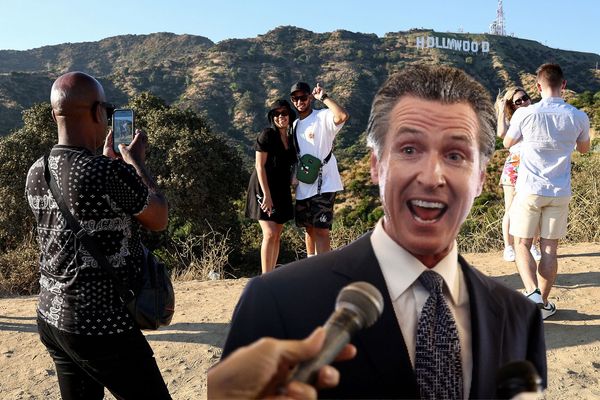
The key Ambassador Bridge trade link between Canada and the United States has reopened after police cleared the last Covid restriction protesters, ending a six-day blockade.
Police moved in to clear and arrest the remaining protesters on the border bridge early on Sunday, trying to end one of the main demonstrations that have broken out across Canada against Covid-19 vaccine mandates and other restrictions to bring the pandemic under control.
After issuing warnings, police said arrests would be made and vehicles towed just after dawn near the bridge linking Detroit and the city of Windsor, Ontario.
By Sunday afternoon, most protesters had gone and vehicles that were blocking the way had been removed, and the bridge reopened just before midnight on Sunday.
“Today, our national economic crisis at the Ambassador Bridge came to an end,” Windsor’s mayor, Drew Dilkens, said.
Police have told protesters they’ll be arrested if they don’t leave pic.twitter.com/3Io55s4yLj
— Ellen Mauro (@EMauroCBC) February 13, 2022
Television and social media images and clips showed officers detaining protesters and removing vehicles.
The road is now effectively clear of protesters. A few hanging out in an adjacent parking lot, but that’s it. pic.twitter.com/D3moSZL0Ql
— Jacob Lorinc (@jacoblorinc) February 13, 2022
Only two pickup trucks and fewer than a dozen protesters had been blocking the road to the bridge after numbers dwindled overnight and before police moved in. Afterward, police barricades remained.
Crowd has thinned out at Windsor border protest. I count fewer than 70 people. @CBCNews @CBCWindsor pic.twitter.com/UWe3vZfJUa
— Jacob Barker (@JacobBarkerCBC) February 13, 2022
Police on Saturday had persuaded demonstrators to move their pickup trucks and others cars that they used at the entrance to the crossing that sees 25% of all trade between the two countries, though it remained closed.
In the Canadian capital, Ottawa, meanwhile, small-scale protesting there swelled to what police said were 4,000 demonstrators. The city has seen that on past weekends, and loud music played as people milled about downtown where anti-vaccine demonstrators have been encamped since late January.
The protests at the bridge and elsewhere have reverberated outside the country, with similarly inspired convoys in parts of France, New Zealand and the Netherlands, showing how small numbers can lead to huge disruption.
The US Department of Homeland Security warned that truck convoys may be in the works in the US.
An ex-cabinet minister in Canadian prime minister Justin Trudeau’s government took the unusual step of calling out her former federal colleagues as well as the province and city for not putting an end to the protests.
“Amazingly, this isn’t just Ottawa. It’s the nation’s capital,” Catherine McKenna tweeted. “But no one – not the city, the province or the federal government – can seem to get their act together to end this illegal occupation. It’s appalling … Just get your act together. Now.”
Trudeau has called the protesters a “fringe” of Canadian society.
Ottawa police said in a statement late Saturday that a joint command center had been set up together with the Ontario Provincial Police and the Royal Canadian Mounted Police.
They said that would beef up enforcement capabilities that had been limited by “safety concerns – arising from aggressive, illegal behavior by many demonstrators – limited police enforcement capabilities”.
Police earlier issued a statement calling the protest an unlawful occupation and saying they were waiting for reinforcements before implementing a plan to end the demonstrations.
“The whole city is furious at being abandoned by the people who are supposed to protect us. They have completely abandoned the rule of law. @OttawaPolice have lost credibility. #OttawaPoliceFailed,” tweeted Artur Wilczynski, a senior government national security official at Canada’s Communications Security Establishment.
Ottawa’s mayor, Jim Watson, declared a state of emergency last week for the capital, where hundreds of trucks remained in front of the parliament buildings and demonstrators have set up portable toilets outside the prime minister’s office where Trudeau’s motorcade usually parks.
Even after protesters’ vehicles were removed early Saturday, hundreds more arrived to bolster the crowd and settled into a face-off with police about two blocks away, waving flags and yelling. While there were no visible physical confrontations, the crowd still controlled the road to the bridge.
On Friday, a judge ordered an end to the blockade of mostly pickup trucks and cars, and the Ontario premier, Doug Ford, declared a state of emergency allowing for fines of C$100,000 and up to one year in jail for anyone illegally blocking roads, bridges, walkways and other critical infrastructure.
With the bridge closed, auto plants on both sides have been forced to shut down or reduce production.







